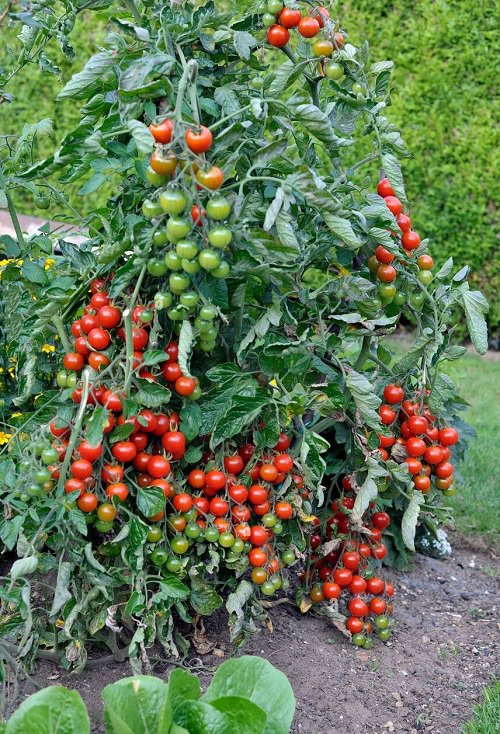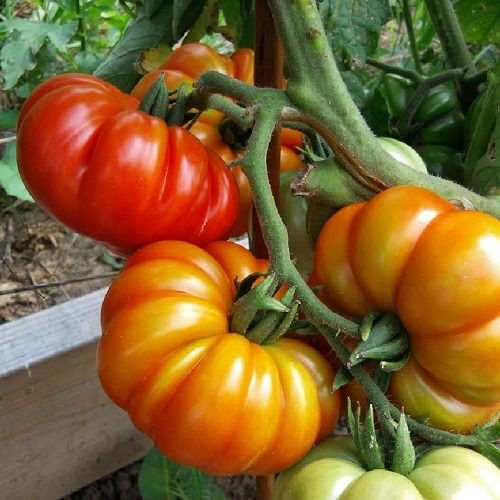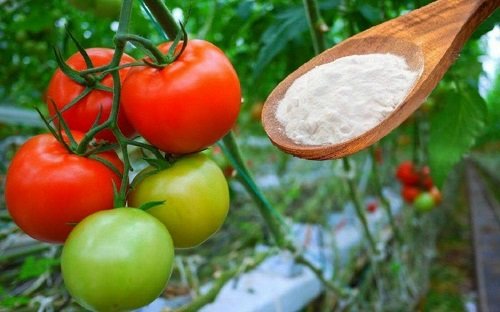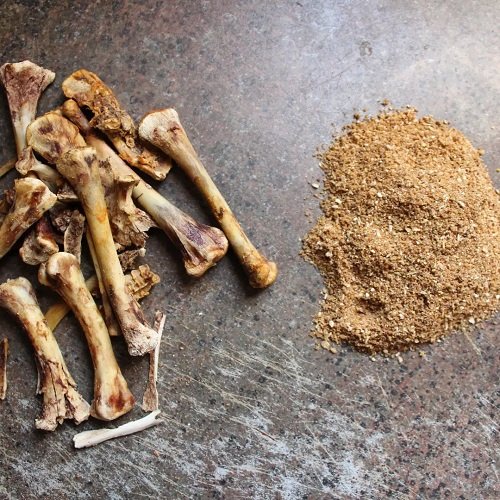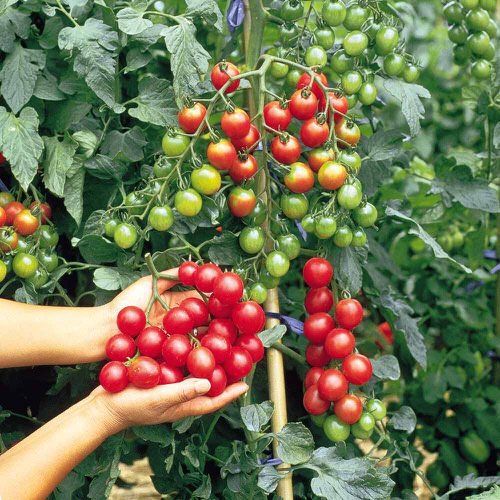Discover simple yet effective Tricks to Grow the Tastiest Tomatoes in Your Garden. Elevate your harvest with expert techniques for flavor!
It’s always exciting to experiment with different methods and discover new ways to make your tomatoes taste even better. Here are the BEST Tricks to Grow the Tastiest Tomatoes ever!
This 2-Second Tomato Tip Can Increase the Productivity Of Tomato Plants
Tricks to Grow the Tastiest Tomatoes
1. Choose the Tastiest Variety
Here are a few tomato varieties that are often praised for their juicy and sweet qualities:
- Sungold (Heirloom): Sungold is a popular cherry tomato variety known for its exceptional sweetness. These small, golden-orange tomatoes have a high sugar content and offer a burst of sweet flavor with each bite.
- Brandywine: Brandywine is an heirloom tomato variety cherished for its rich, sweet taste and juiciness. It comes in different colors, including red, pink, and yellow, and has large fruit with a luscious texture.
- Cherokee Purple: Cherokee Purple is another heirloom tomato variety loved for its sweet and complex flavor. These tomatoes have a rich, dusky purple color and a balanced sweetness that is often accompanied by a hint of smokiness.
- Sweet Million: Sweet Million is a popular hybrid cherry tomato variety that lives up to its name. These tomatoes are incredibly sweet and juicy, making them a delightful addition to salads and snacking.
- Green Zebra (Heirloom): Green Zebra tomatoes have a unique combination of sweetness and tanginess. These small to medium-sized tomatoes have green stripes and offer a refreshing, juicy, and slightly tart flavor.
- Lemon Boy: Lemon Boy tomatoes are known for their vibrant yellow color and sweet flavor. These medium-sized tomatoes have a juicy flesh and a mild, citrusy sweetness.
Check Best Tomato Varieties for Containers here
2. Grow Heirloom Tomatoes
Growing heirloom tomatoes can be a great idea for obtaining sweeter fruits due to their unique characteristics and flavors.
- Genetic diversity: Heirloom tomatoes are open-pollinated, which means they are not hybridized or genetically modified. They are bred for their diverse and distinct characteristics, including flavor.
- Flavor diversity: They have a higher sugar content and a perfect balance of acidity, resulting in a sweeter taste compared to some commercially available hybrid tomatoes.
- Longer ripening time: Heirloom tomatoes often have a longer ripening period, which allows them to develop more complex flavors and sweetness.
Here are the most sweetest heirloom tomatoes you can grow:
- Black Cherry: Black Cherry is a popular heirloom cherry tomato variety with a remarkable balance of sweetness and acidity.
- Pineapple: They are known for their tropical, sweet flavor that is reminiscent of a pineapple, hence the name.
- Chocolate Cherry: Chocolate Cherry tomatoes are small, dark red to brownish-purple cherries with an exceptionally sweet and rich flavor.
- Aunt Ruby’s German Green: This large, beefsteak-type tomato variety has a green color when ripe and offers a sweet, tangy flavor.
2. Use Epsom Salt
The flavor is a crucial factor when growing tomatoes, and Epsom salt can greatly assist in achieving delicious results.
Magnesium is important for chlorophyll production and overall plant health, which indirectly influences fruit development. Sulfur is involved in the production of certain compounds that contribute to flavor – both are present in Epsom salt.
We have a great article on how to use Epsom salt for tomatoes here
3. Go for Companion Planting
Companion planting can be beneficial for tomatoes by promoting their growth and enhancing their flavor.
- Basil: Basil repels pests, attracts beneficial insects, and some gardeners believe it can enhance the flavor of tomatoes.
- Marigold: Marigolds help deter pests and can support healthy tomato growth and potentially enhance flavor.
- Borage: It improves the overall growth and health of tomatoes. It attracts pollinators and repels pests, contributing to stronger plants and potentially sweeter fruit.
- Chives: Chives are known to enhance the growth and flavor of many plants, including tomatoes. They also deter certain pests and attract beneficial insects.
- Calendula: Calendula, also known as pot marigold, has bright flowers that attract pollinators and beneficial insects. It can help improve tomato health and potentially influence flavor.
- Parsley: Parsley is a versatile herb that can be grown alongside tomatoes. Some gardeners believe it improves the taste and aroma of tomatoes while repelling certain insects.
Read the Number One Technique to Produce Sweeter Tomatoes here
4. Add Baking Soda
Achieve sweeter tomatoes, especially when growing them in containers, by sprinkling a small amount (One teaspoon per pot, once in 2 months) of baking soda around the base of your tomato plants.
As the baking soda is absorbed into the soil, it helps lower the acidity levels, resulting in tomatoes that are delightfully sweet rather than tart. It’s a simple yet effective trick that yields delicious results.
Check out Baking Soda and other Best Homemade Fertilizers for Tomatoes here
5. Put Fish Heads
Fish heads specifically make tomatoes sweeter, providing the plants with a balanced nutrient supply can contribute to their overall flavor and juiciness.
Before planting tomatoes, dig a hole or trench in the planting area. Place the fish heads at the bottom of the hole or trench and cover them with soil. This allows the nutrients from the fish heads to slowly release into the soil as they decompose.
6. Use Bone Meal
Bone meal provides essential nutrients to plants, including phosphorus and calcium, which can definitely make tomatoes sweeter and bigger.
Before planting tomatoes, mix 2 teaspoons of bone meal per plant into the soil. This helps ensure that the nutrients are available to the plants as they grow.
As the tomato plants grow, you can apply bone meal as a side dressing by sprinkling it around the base of the plants and gently working it into the top layer of soil. This provides a slow-release source of nutrients throughout the growing season.
Here is How to Use Bone Meal on Plants
7. Go for the Vine Ripening Technique
Vine-ripening is often considered a good method for achieving sweeter and bigger tomatoes.
- Optimal Flavor Development: Tomatoes that are allowed to ripen on the vine have more time to develop their full flavor potential. As the tomato matures, it undergoes natural processes that convert starches into sugars, resulting in a sweeter taste. The longer the tomato stays on the vine, the more time it has to accumulate sugars and develop its sweet flavor.
- Enhanced Fruit Texture: Vine-ripened tomatoes often have a better texture compared to tomatoes picked prematurely and ripened off the vine. They tend to be juicier and sweeter.
- Improved Taste and Aroma: Tomatoes ripened on the vine have more time to develop their natural taste and aroma, enhancing the overall sensory experience when eating them.
In love with Tomatoes? Here are the Best Tomatoes for Sandwiches
8. Boost Flavor with Molasses

Using molasses as a soil amendment can provide certain benefits to tomato plants, such as enhanced microbial activity, increased nutrient availability, and improved soil structure – all this can greatly enhance the taste and sweetness.
Mix 1-2 tablespoons of unsulfured molasses into a gallon of water. Stir well to dissolve. Use this diluted solution to water your tomato plants once a month during the growing season.
9. Use the Science of Pruning!

Pruning tomatoes can indirectly contribute to sweeter fruit by redirecting the plant’s energy toward fruit production and optimizing sunlight exposure and airflow.
- Enhanced Sunlight Exposure: Pruning removes excess foliage and opens up the plant, allowing more sunlight to reach the fruit. Sunlight is crucial for the process of photosynthesis, where plants convert sunlight into sugars. Increased sunlight exposure can potentially result in sweeter tomatoes with higher sugar content.
- Improved Air Circulation: Pruning helps improve air circulation around the plant, reducing humidity and preventing the development of fungal diseases. Adequate airflow can enhance fruit quality by minimizing the risk of rot or disease-related issues that may negatively impact sweetness.
- Directing Energy Towards Fruits: By removing excessive branches and suckers, pruning helps direct the plant’s energy towards fruit production. This results in fewer but larger and more robust fruits. Generally, larger fruits have a higher sugar concentration and can be sweeter compared to smaller fruits.
- Enhanced Ripening: Pruning can promote more uniform ripening by ensuring that the fruits receive sufficient sunlight and airflow. This can help achieve a consistent level of sweetness throughout the fruit.
Watch out for these 13 Mistakes When Growing Tomatoes
10. Harvest at the Right Time
Picking tomatoes at the right time is crucial for achieving sweet and bigger fruits. The optimal time to harvest tomatoes depends on various factors such as the tomato variety, climate conditions, and intended use.
- Pay attention to the tomato’s color and firmness. Ripe tomatoes often exhibit a vibrant red color (although some varieties may be yellow, orange, or even green when ripe). Gently squeeze the fruit—if it feels slightly soft but still maintains some firmness, it is likely ready for harvest.
- Ripe tomatoes tend to have a strong, distinct smell that is characteristic of the variety. If the tomato emits a pleasant, sweet scent, it is usually a good sign that it is ready to be picked.
- If you are unsure about the ripeness of a tomato, you can perform a taste test. Select a tomato that appears to be close to maturity and sample a small section. Ripe tomatoes are typically sweeter and have a well-developed flavor. If the taste is tangy and delicious, it’s likely at its peak ripeness.

